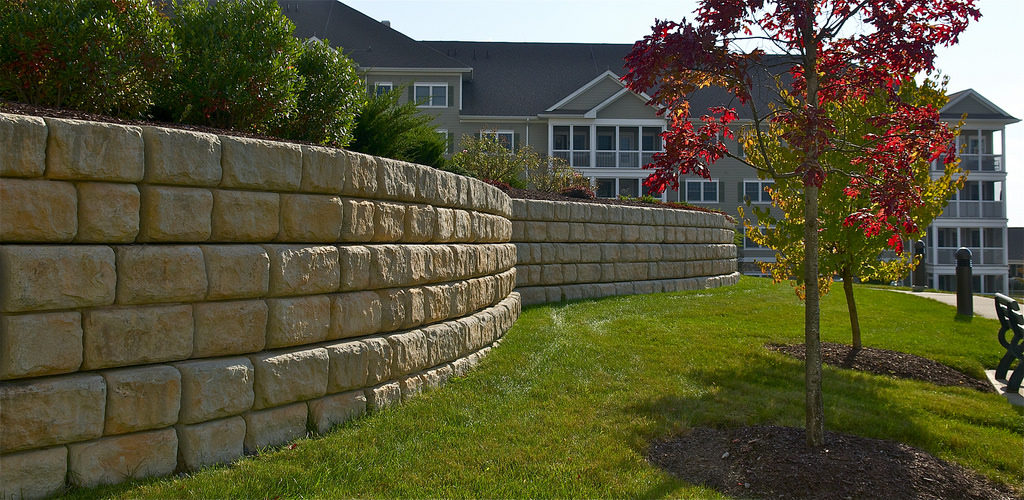
This is obviously a problem from a landscaping point of view; it doesn’t take a green thumb to know that standing water is detrimental to grass, shrubs, trees and plants. Unless that problem is taken care of and the water is removed, your landscape could take a beating as a result of snowmelt – or heavy rainfall in the spring, for that matter.
Apart from using an electric pump to painstakingly remove the water every time it pools, what can be done? If you guessed ‘retaining wall,’ you’re correct. These landscape structures – which are most commonly built using masonry or concrete – are commonly constructed to prevent water from pooling, and to protect landscapes against both minor and major flooding events.
The practical benefit of a well-designed retaining wall is not all, however. When these walls are designed and built the right way, they also offer a valuable aesthetic accent to any exterior landscape, and can go a long way towards beautifying your outdoor residential or business space.
Retaining walls built with bricks and masonry are a great example. There are endless choices in terms of the color, texture, size and shape of the bricks. The materials and design can be chosen to highlight certain aspects of your property or landscape.
But let’s get back to the practical side for a moment. A well-built retaining wall can actually save you thousands over the course of years by preventing flooding events and standing water in your yard. This isn’t just to protect the grass, but also to prevent things like insect breeding, mold, mildew, and other nuisances.
Who should built a retaining wall?
It’s entirely possible to built a simple retaining wall yourself, using instructional content you find online and materials from your local home goods store. People do this every year, and many of those projects end up with good results. If you don’t have experience with masonry or concrete, however, and if you want to make sure that your retaining wall holds up and looks great through the passing seasons, you’ll probably want to put it in the hands of a professional. When the costs, time and frustration of building your own retaining wall are taken into account, hiring a seasoned pro may actually turn out to be the more economical option. Just make sure you go with reputable and trustworthy specialist who has a proven reputation and offers a written guarantee for work completed.
